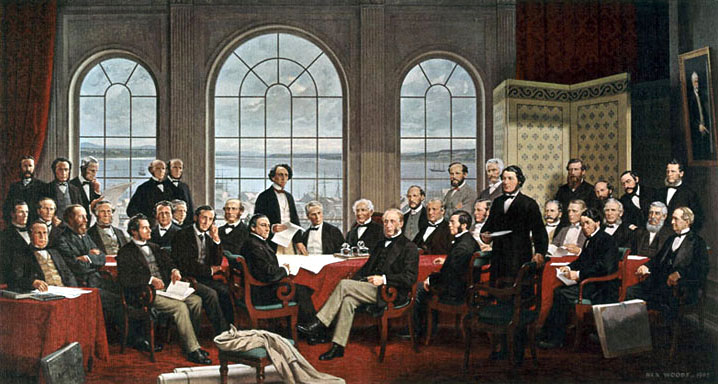Glashan artwork restored
By Rebecca Kiriakopoulos
About 140 kg of plaster, more than three metres of lumber and 37 heads moulded by tiny hands made up the maquette of the 1864 Quebec Conference that was put on display for the celebration of Canada’s Centennial.
For nine months in 1967, the students of Glashan Public School had devoted their lunch hours and March Break to creating a diorama of the October 1864 Quebec Conference, a key step in the process that led to Confederation. The massive maquette was displayed at Lansdowne Park in May 1967.
Since then, the project has been collecting dust in storage, and today is kept at the Canadian Museum of History in Gatineau.
Now, 50 years after it was created, the museum is celebrating Canada’s 150th birthday with an exhibit it hopes will include the maquette — now restored to its original state.
Merrill Bogart, a geography and history teacher at Glashan, was the force behind the maquette project and its revival. Now 94, Bogart said his original inspiration came from a picture he saw of artist Rex Woods’ 1964 painting The Fathers of Confederation in the newspaper one morning.
“It was coming up on the Centennial and the Quebec Conference was the main ordeal that decided Canada was going to be a country,” Bogart said. “I thought that this picture was a good thing for the kids to learn about and recreate.”
According to Bogart, the project was an effort made by the entire Glashan community.
“Although it began with mostly kids from my class, by the end I had volunteers from the whole school,” he said. “The principal was very supportive, Ralph Fraser, the woodworking teacher, was a great help as well as the sewing teacher — and even her mother.”
The maquette was displayed along with other projects from the various surrounding schools.
“Dr. MacSkimming, the chief inspector of the school board, convinced the museum to store the maquette, otherwise it would have been destroyed,” Bogart said.
Xavier Gélinas, the museum’s curator of political history, first heard about the maquette in 2013.
“Mr. Bogart informed me of the existence of this artifact, which I admit, I barely knew about,” Gélinas said.
“We at the museum had been preserving it but with the passage of time and other priorities we had not devoted much attention to the artifact.”
Jennifer Ann Mills, the museum’s object conservator, led her team in the restoration of the maquette.
It was a very meticulous process, noted Gélinas. The heads of the figures were stored individually in 37 separate boxes and the acrylic paint was beginning to peel off the faces.
“At one point if you leave material things unattended and unloved for too long, there are limits for what you can do too late in the process,” he said. “Whereas if you intervene at the right time you can refresh the original colours and the spark which is what we were able to achieve.”
The maquette has been restored to its original state; however, it is not currently on display at the museum.
“What I would like to say to people who are legitimately disappointed that this or that item is not on display, in this case, we have attempted and completed the restoration project,” said Gélinas.
“By refreshing and giving a new life to this really one-of-a-kind artifact, this is our heritage-oriented contribution to the Ottawa 2017 celebrations.”
Guided tours, schools groups and historical societies interested in viewing the maquette are able to visit the restored artifact
The museum is currently looking for the former students who would have taken part in the maquette project, searching for the faces in Bogart’s photographs of the building process posted on Facebook.
Museum officials say they are keen to identify and speak to any student who participated in the 1967 Glashan School maquette project about their experiences.

